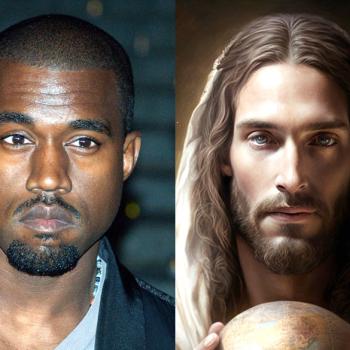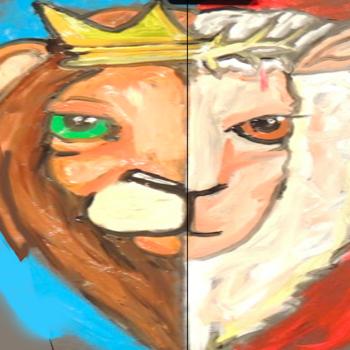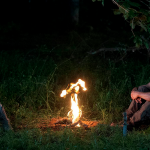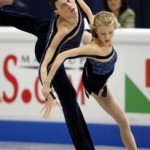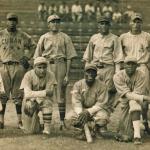On Sunday, July 15th, riders in the 99th Tour de France faced an unexpected challenge as they began their ascent in stage 14, the Mur de Peguere: someone had covered the road with tacks, affecting over 30 riders. One crash claimed Croatian rider Robert Kiserlovski, who left the race with a broken collarbone. Eventual winner Bradley Wiggins made a precautionary bike change and defending champion Cadel Evans suffered three flat tires that nearly removed him from contention in the race. Wiggins, however, persuaded his group (which contained all of the primary challengers in the race) to slow the pace so that Evans could regain his position. When Pierre Rolland (in 10th place at the time) attacked, the yellow jersey group fought to rein him in, protecting their own positions and preventing him from taking advantage of Evans’ misfortune. (Rolland claims he did not know the tack situation at the time.)
Wiggins’ maneuver represents the camaraderie and sportsmanship that often characterize professional cycling. In a grueling event like the Tour de France, riders endure 21 days of racing, often approaching and sometimes exceeding 200 kilometers of cycling a day through mountainous regions like the Pyrenees. Crashes are commonplace as riders traverse cobblestones, narrow streets, and treacherous descents. The fans, too, play a role, sometimes getting frighteningly close to the riders (who often respond with a stiff arm to protect themselves), but the tacks were a malicious attempt to sabotage the race and endanger the cyclists. Yet in spite of the race’s intensity, the riders adhere to a code of conduct that ensures fair play. One famous example of such sportsmanship took place in the 2003 Tour, when eventual winner Lance Armstrong crashed and his competitors waited for him to return to the lead group. In a grand tour that pits men against natural elements like weather and mountains, as well as their own human limitations, there is a brotherhood among competitors.
Even the grand tour’s rules support the community. If a crash occurs within three kilometers of the finish, the riders who crash earn the same time as the group they were with. In one stage this year, a referee maintained the neutral, no-attack zone so that a rider who crashed in the beginning of a stage could return to the peloton. These decisions sustain the safety of the group in a sport where riders risk their lives in every race. Winning honorably trumps endangering or sacrificing another competitor, or abusing an advantage gained unfairly because of another rider’s mechanical issue or fan interference. Take the 2010 Tour, for instance, when Alberto Contador sped past then-leader Andy Schleck, who was sidelined by a lost chain. Contador went on to win that year amidst controversy from fans and competitors alike who believed passing Schleck like he did was unethical. Yet the emphasis on ethics within the race seems to stand in stark contrast to the perpetual revelations and accusations of doping that haunt professional cycling.
Christ and Pop Culture’s own Doug Hankins recently dealt with the lingering suspicion surrounding 7-time Tour winner Lance Armstrong. Alberto Contador, meanwhile, has been stripped of his 2010 Tour victory and banned from professional cycling for 2 years following a guilty verdict in his own doping case. And in just the last few days, Frank Schleck (Andy’s older brother) dropped out of this year’s Tour after testing found a banned diuretic. Armstrong, Contador, and Schleck all deny using performance-enhancing drugs, with Contador blaming tainted meat and Schleck claiming he was poisoned; Armstrong, at least, has come up clean on every test. What these allegations do, though, is cast a cloud of doubt over an entire sport, one that is historically known for both doping and competing with honor. How do these two seemingly antithetical worldviews coexist for these riders, athletes who may be willing to cheat to gain an edge but will slow down to wait for a fallen competitor?
There are a couple of explanations for this discrepancy. The first may be the perception within the sport that, with regard to doping, “everybody’s doing it,” and so using performance-enhancing substances is a means of evening out the playing field. That is the angle that some of Armstrong’s former teammates are taking as they prepare to testify against the legendary cyclist: they claim that doping was ubiquitous in Tour culture at that time and athletes were pressured to comply in order to maintain the team’s quality. At this point, the Armstrong case involves the U.S. Anti-Doping Agency (USADA), a non-governmental authority that oversees drug testing and sanctions for U.S. athletes. However, there is some resistance to the USADA’s authority, likely due to a distinction between standards imposed from without and those agreed upon from within. The camaraderie among cyclists that inspires etiquette within the race could be the same factor that makes some riders comfortable with doping and opposed to rules set by outsiders with no knowledge or experience of a grand tour.
Another potential explanation could be based on behavior that is visible and that which is invisible. Consider Contador, whose decision to pass a broken-down Schleck irked other riders and fans: his actions were on display for all to see, just like all of the other etiquette conventions that riders subscribe to. Doping, however, takes place in secret, where outsiders cannot see. That insider/outsider division is precisely what makes Armstrong’s teammates’ testimony so potentially damning. His former teammates, who spent the Tour with him and shared his training, claim they saw him doping and participated in the practice as well — and that is simply not knowledge that ordinary fans can access. The hypothesis that the Tour’s honor system may be superficial, only sustainable insofar as it makes riders look good, is certainly disturbing. Honor that exists only for show is no honor at all.
I grapple with these issues as a fan of professional cycling. I want to believe in Armstrong’s innocence: not only he has not actually tested positive for doping, but his story represents the indomitable human spirit. The Tour itself illustrates the greatness of human potential: strength and endurance pushing the boundaries of human ability, struggling against the majestic scenery that shows men no mercy. I love to root for the breakaways, those maverick riders who steal away from the group against all odds that they can maintain the ferocious tempo necessary to outpace the peloton. I love the races within the race (the yellow jersey, the white jersey, the green jersey, and the polka-dotted jersey) and the teammates who sacrifice themselves and their own aspirations of victory to support the team goal. The cyclists who ride in the Tour are not only an elite group of athletes but also a fraternity that values honor, sacrifice, and endurance in pursuing a seemingly impossible goal. Unfortunately, the shadow of doping lurks behind the nobility of the Tour, calling into question both the virtues of the riders and the legitimacy of the race itself.
As I watch the closing stages of this year’s Tour, I keep thinking about the prayers of the hypocrites who make a spectacle of their humility in the temple but whose words are insincere. The culture of professional cycling prizes one kind of fairness, one kind of honor: the kinds that are on display. What happens behind the scenes, and what condition their hearts are in, I can never say. I will continue to watch in awe as the riders ascend mountains and soar down serpentine descents. Merely finishing this race seems to stretch the frontiers of human abilities, and more than one cyclist will break in the endeavor to make it to the finish line in Paris. But as much as these men may seem superhuman as they race across Europe, the discrepancy between what is seen and what remains unseen reminds me that they are as human as me.



